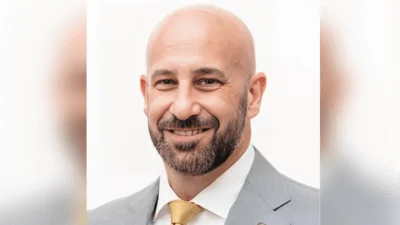Badger Institute issued the following announcement on January 12.
At the height of the initial COVID-19 outbreak, correctional and other public safety agencies in Wisconsin bought at least 55 disinfection robots at a cost of more than $2.2 million.
Few, if any, of the $40,000 purchases would have been possible without federal CARES Act funding, according to jail administrators, sheriffs and the people who sold the ultraviolet light cleaning machines.
While those who bought the robots credited them for helping prevent the spread of a virus they knew little about at the time, they did not relieve staff of manually spraying and wiping down jail cells, intake reception and common areas. Several jail administrators who said they were tempted to get a robot with the “free” federal money, said they thought they did just as well with traditional disinfection methods.
“It’s not free money, taxpayers are paying for them,” Taylor County Sheriff Larry Woebbeking said. “I think we did as good with our good, old-fashioned scrubbings as a $40,000 machine. I sleep good at night (doing without a disinfection robot).”
The Badger Institute initially found two of the robot expenditures during a review of medical and emergency spending in the state from the $2.2 trillion Coronavirus Aid, Relief, and Economic Security Act that became law at the end of March 2020. We discovered the scope of the buying spree through calls to nearly two dozen counties around the state.
The review is part of a comprehensive Badger Institute analysis of billions of dollars of CARES Act funding showered on the state and, specifically, the $190 million in Local Government Aid Grants to more than 1,150 counties, cities, villages and towns. In the latest edition of our magazine, the Badger Institute identified more than $100 million in CARES Act funding that still has not been spent almost two years after it was distributed.
The Badger Institute supports accountability in all government spending, like that of a legislative oversight proposal made this week, and a statewide CARES Act funding audit launched by the state of Connecticut when evidence of fraud surfaced.
Almost all of the disinfection robots – five-foot towers of a dozen ultraviolet, germicidal lamps on wheels – were sold in Wisconsin by a Grand Rapids, Mich., company called Skytron. Prior to the COVID outbreak, Skytron’s principal market was hospitals and health care centers, Larry Perez, the former company vice president who sold most of them, told the Badger Institute.
Perez said he recognized a potential new market in jails and prisons, but despite his efforts to educate at jail and sheriff’s association conferences, administrators balked at the $40,000 price tag. “Before COVID, they (Skytron) were the people over in the corner that nobody went over and talked to,” Capt. Curt Dutton, Chippewa County’s jail administrator, said.
With the onset of COVID, Skytron found a buyer and an advocate in Dave Mahoney, former Dane County sheriff. Dane County eventually purchased eight units, more than $320,000 in all, for the jail, the medical examiner’s office, the courthouse and long-term care facilities, Perez said. All of the units were paid for with CARES Act funding, he said.
Mahoney’s word-of-mouth endorsement of disinfection robots got the attention of the non-profit journalism site The Marshall Project, which quoted him in May 2020. “‘I’ve sold more of those machines for them than their salesman,’ he said with a laugh.”
Skytron sold roughly 20 units in April 2020 and 30 units through July. Perez said he and another salesman, Mike Bradley, were putting in 18-hour days before leaving to start their own company, UVC Experts. By the end of the year, disinfection robots were in at least 65% of the state’s 71 county jails and in several police and fire departments.
Several calls and an email to Skytron officials from The Badger Institute to discuss the disinfection robot business in Wisconsin were not returned.
Dutton was an early adopter. With CARES Act funding pouring into state, county and local governments, Dutton and many others saw a once-in-a-lifetime opportunity that no county board would have otherwise approved.
“Something like this doesn’t come around often,” he said. “It was a no-brainer.”
Administrators who have the units rave about them. “It’s not just for COVID, it’s for any bacteria. It kills head lice, scabies, anything with DNA,” Capt. Lewis Lange, Sauk County Jail Administrator, said. “It’s helped to keep my staff and, obviously, the inmates safe.”
Not one of the administrators interviewed reported a COVID outbreak that developed inside their jails. But while they credit their robots, the manufacturer pointed out and jail administrators clearly understood they were meant to provide an additional layer of protection.
No one interviewed for this story discontinued manual sanitizing, commonly done in county jails by staff and inmates. “It’s not a silver bullet by any means,” Dutton said.
At the same time county jails were buying disinfection robots, they were also consciously reducing their inmate populations to stanch the spread of COVID. In some cases, inmate counts were halved with the cooperation of county judges and law enforcement and by programs like entirely remote monitoring of inmates on the Huber Work Release program.
The Crawford County Jail had an inmate population of about 40 at the time its disinfection robot was purchased in the spring of 2020. This past week, the robot was providing disinfection for 17 inmates, Lt. Russ Wittrig, the jail administrator, said.
If federal money were available, Wittrig said he wouldn’t hesitate to get a robot again. “It’s phenomenal,” he said. “I wish I would have had something like it 20 years ago.”
Several other jail administrators, including Vernon County Capt. Charles Jacobson, blanched at the $40,000 cost, regardless of where the money came from. He did everything the other counties were doing, except buy a robot.
The Vernon County Jail, with a population of 28, a third of its pre-COVID level, had no outbreak, Jacobson said. “We were taking it serious and I think we did OK doing with what we had.”
Woebbeking said the Taylor County clerk and board never offered him the opportunity to apply for disinfection robot funding and, in hindsight, it was probably a good thing. Except for moving a few line items around, Woebbeking said he never went over his $12,000-a- year cleaning supplies budget.
“I don’t think we needed it (the robot) and we did good,” he said. “We’re still doing good.”
As soon as the CARES Act money went away, the bottom dropped out of the disinfection robot business, Perez said. He and Bradley are selling a stripped-down model at less than half the price of the Skytron 1140.
Still, business in that segment of the market is tepid.
Without federal funding, counties are eventually going to have to pay some steep maintenance costs when their three-year service contracts expire. A single replacement bulb for the robot can cost at least $300. An ultraviolet sensor, which will also wear out, is $5,000, Perez said. “This is a six-year depreciable product,” he said.
He remains a big believer in the health benefits of robots in jails, but doubts he’ll see a revival in his county jail business. “The CARES Act was a great resource,” he said, “but it should not be the sole factor in determining how you’re going to keep people safe.”
Original source can be found here.






 Alerts Sign-up
Alerts Sign-up